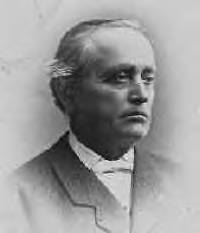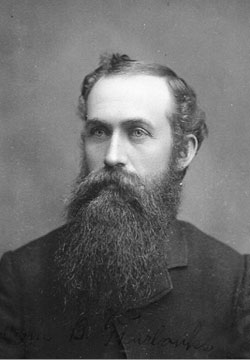
Fairbanks is a home rule city and the borough seat of the Fairbanks North Star Borough, Alaska, United States. Fairbanks is the largest city in the Interior region of Alaska and the second largest in the state. The 2020 Census put the population of the city proper at 32,515 and the population of the Fairbanks North Star Borough at 95,655, making it the second most populous metropolitan area in Alaska after Anchorage. The Metropolitan Statistical Area encompasses all of the Fairbanks North Star Borough and is the northernmost Metropolitan Statistical Area in the United States, located 196 miles by road south of the Arctic Circle.

Paul Howard Manship was an American sculptor. He consistently created mythological pieces in a classical style, and was a major force in the Art Deco movement. He is well known for his large public commissions, including the iconic Prometheus in Rockefeller Center and the Celestial Sphere Woodrow Wilson Memorial in Geneva, Switzerland. He is also credited for designing the modern rendition of New York City's official seal.

The University of Alaska Fairbanks is a public land-, sea-, and space-grant research university in College, Alaska, a suburb of Fairbanks. It is the flagship campus of the University of Alaska system. UAF was established in 1917 and opened for classes in 1922. Originally named the Alaska Agricultural College and School of Mines, it became the University of Alaska in 1935. Fairbanks-based programs became the University of Alaska Fairbanks in 1975.

Laie Hawaii Temple is a temple of the Church of Jesus Christ of Latter-day Saints located on the northeast shore of the Hawaiian island of Oʻahu. The temple sits on a small hill, half a mile from the Pacific Ocean, in the town of Lāʻie, 35 miles (56 km) from Honolulu. Along with Brigham Young University–Hawaii and the Polynesian Cultural Center, the Laie Hawaii Temple plays an important role in the town of Lā'ie, with the Visitors' Center attracting more than 100,000 people annually.

Mahonri Mackintosh Young was an American social-realist sculptor and artist. During his lengthy career, he created more than 320 sculptures, 590 oil paintings, 5,500 watercolors, 2,600 prints, and thousands of drawings. However, he is primarily recognized for his sculpture. His work includes landscapes, portraits, busts, life-size sculptures, monuments, and engravings. Regardless of his medium of choice, his work is characterized by spontaneity; he often preferred to prepare his work with quick sketches on the scene. He felt this made his work more natural as compared to using a model in the studio. He was fairly commercially successful during his life, though he did not find success until his mid-30s. Large commissions for sculptures from the Church of Jesus Christ of Latter-day Saints were particularly lucrative for him.

Erastus Snow was a member of the Quorum of the Twelve Apostles of the Church of Jesus Christ of Latter-day Saints from 1849 until his death. Snow was a leading figure in the Mormon colonization of Arizona, Colorado, and New Mexico.
Cypress Creek High School, also known as Cy Creek, is a secondary public school located in unincorporated Harris County, Texas, United States. Cypress Creek, which serves grades 9 through 12, is a part of the Cypress-Fairbanks Independent School District.
Swiss Americans are Americans of Swiss descent.
Stanley J. Watts is an American artist and sculptor, mostly in life size bronzes.

Avard Tennyson Fairbanks was a 20th-century American sculptor. Over his eighty-year career, he sculpted over 100 public monuments and hundreds of artworks. Fairbanks is known for his religious-themed commissions for the Church of Jesus Christ of Latter-day Saints including the Three Witnesses, Tragedy of Winter Quarters, and several Angel Moroni sculptures on spires of the church's temples. Additionally, Fairbanks sculpted over a dozen Abraham Lincoln-themed sculptures and busts among which the most well-known reside in the U.S. Supreme Court Building and Ford's Theatre Museum.
Ortho Rollin Fairbanks was one of many members of the Fairbanks family who have been prominent artists.

John B Fairbanks was an American landscape painter. In 1890, he was one of a group of artists who studied in Paris under the sponsorship of the Church of Jesus Christ of Latter-day Saints, in preparation for painting murals at the nearly completed Salt Lake Temple. He painted murals in the Salt Lake Temple and the Mesa Arizona Temple that still exist today. Fairbanks was the official photographer for the South American expeditions of Benjamin Cluff. Fairbanks was the first artist to live and paint in Zion National Park. He was an early art instructor at Brigham Young Academy and was one of the founding members of the Utah Art Institute. Fairbanks was the father of artists John Leo Fairbanks, Ortho Lane Fairbanks and Avard Tennyson Fairbanks (sculptor).

Daniel Justin Fairbanks is an American biologist who was formerly a dean of Undergraduate Education at Brigham Young University (BYU). He is a specialist in biology who has written books on the subject.

John Hafen was a Swiss-born American artist, primarily of landscapes and portraits.
Jonathan Leo Fairbanks is an American artist and expert of American arts and antiques. Fairbanks created the American Decorative Arts and Sculpture department at the Museum of Fine Arts, Boston, and served as Curator of the department from 1970 to 1999.
Fairbanks House may refer to:
J. Leo Fairbanks House may refer to:
John Leo Hafen was an American photographer and artist and the first person to bring color photography to Utah. Attending school in Springville, Utah, and Salt Lake City, Hafen experimented with different art forms. He received the Utah Arts Council Award for Best Amateur Work in Photography in 1899. He also won an award at the Art Institute in 1907 and won a Special Merit award from Desert Magazine in 1940. He co-owned the Olsen and Hafen photographic gallery in Provo, Utah, and toured with photographer George Edward Anderson. In 1908, Hafen married Daisy Marie Nelson, who died in childbirth in 1908. One year later, Hafen married Ella Lowry and had five children with her. A member of the Church of Jesus Christ of Latter-day Saints, Hafen was excommunicated for his involvement with the West Tintic Branch, whose members were found guilty of practicing "wife sacrifice", a form of wife swapping which they considered to be religiously justified.

The J. Leo Fairbanks House is a historic house in Salt Lake City, Utah. It was built in 1908 for artist J. Leo Fairbanks, whose father was painter John Fairbanks and whose brother was sculptor Avard Fairbanks. The house was designed in the Colonial Revival architectural style, and it was used as an artist studio by Fairbanks, his father and brother. It has been listed on the National Register of Historic Places since April 26, 1984.











